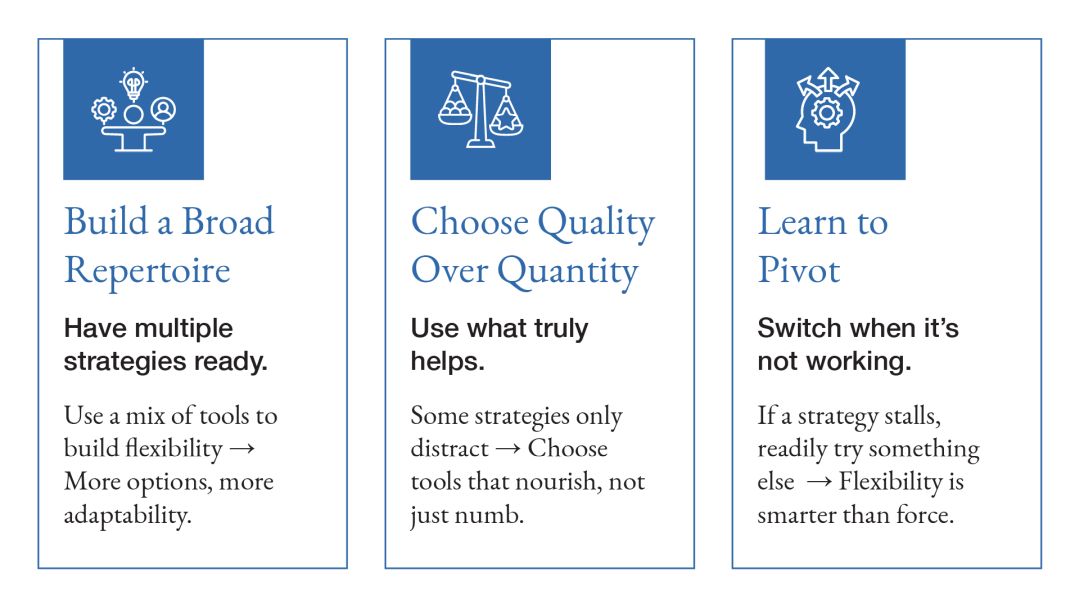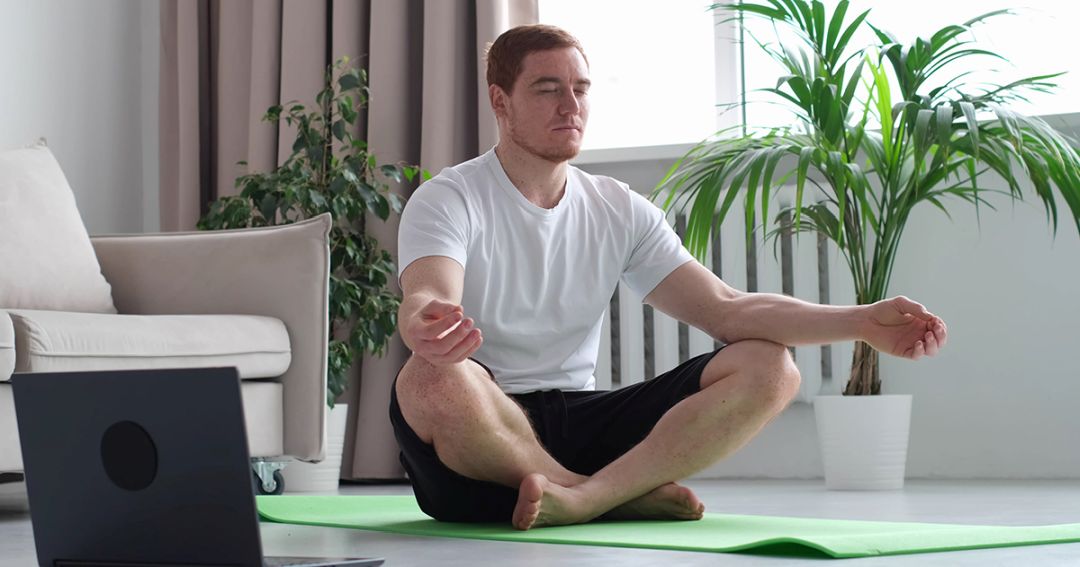Stress Management Basics: Start with the Principles
Suppose you were asked to teach a class called Stress Management 101. What would you cover in the very first session?
Personally, I’d start with a key distinction—one that’s often overlooked: the difference between principles and techniques. Both are essential, but principles should come first. Why? Because principles are universal, while techniques are personal.
What helps one person manage stress might not work for another. One person might rely on exercise, another on meditation, journaling, or leaning on a friend. These are all valid techniques, but they’re grounded in the same foundational ideas, like restoring balance, calming the nervous system, or shifting perspective.
If a course focuses only on techniques, students may walk away with a list of tools that don’t quite fit their life. But if you begin with the principles of stress management, each person can then choose the techniques that align with their personality, mindset, and lifestyle.
Principles also provide structure and clarity. Without them, techniques can feel scattered or superficial. Principles explain the why and the when; techniques are just the how. When people understand the bigger picture first, they’re better equipped to apply strategies wisely, adapt them when needed, and build a personalized, sustainable toolkit for resilience.
The Principle of Homeostasis
Next, I would point to the body as a powerful example of how healthy stress regulation works.
Every day, your body responds to changing demands: movement, emotion, digestion, sleep. In response, it adjusts constantly: increasing heart rate during exercise, releasing adrenaline in moments of fear, cooling you down on a hot day. The goal behind each of these responses is the same: to return to balance. This self-regulating process is called homeostasis.
Adaptability Is the Sign of Health
At first glance, your heartbeat may seem steady. But measured closely, there’s subtle variation between beats—a phenomenon called heart rate variability (HRV). Higher HRV reflects a well-regulated nervous system that can flexibly shift between stress and recovery. Lower HRV, on the other hand, is often linked to aging, chronic stress, and disease.
This pattern holds true across many systems. Healthy breathing adjusts to posture and emotion. Hormones rise and fall in natural cycles. Even our walking patterns display variability—and when that adaptability is lost, it can signal neurological decline, as seen in conditions like Parkinson’s disease.
In short: resilience in the body isn’t about staying the same—it’s about the ability to shift, adjust, and recover.
Psychological Flexibility: The Mind’s Version of Homeostasis
Just as your body protects your health by staying adaptive, your mind protects your well-being through coping flexibility—the ability to adjust your response based on what the moment calls for.
Coping flexibility is one of the most reliable indicators of effective stress management. People who cope well don’t rely on just one strategy—they adapt, shift, and respond with intention.
So how do you actually build coping flexibility? It starts with three essential skills:
The Three Components of Coping Flexibility

1. Build a Broad Repertoire
Coping strategies are the mental, emotional, and behavioral tools we use to handle stress. They help us calm down, solve problems, express emotion, or simply get through tough moments.
No single strategy works every time. The more tools you have—deep breathing, movement, reflection, connection, creative expression—the more likely you are to find one that fits the situation.
2. Choose Quality Over Quantity
Not all coping strategies are created equal. Some provide short-term relief but leave you more depleted—like avoidance, overworking, emotional numbing, or distraction. High-quality coping tools do more than soothe—they help you regulate emotion, restore energy, and reconnect with what matters. Think: cognitive reframing, mindfulness, journaling, physical activity, asking for support, or setting boundaries to name just a few.
3. Learn to Pivot When a Strategy Isn’t Working
Flexibility means recognizing when your usual approach—like shutting down or pushing through—isn’t helping. It means pausing, reassessing, and consciously switching to something more effective. This ability to “pivot” doesn’t develop in crisis. It’s built through small, intentional choices in everyday life—when the stakes are low, and your awareness is high.
Final Takeaway: Flexibility, Not Force, Builds Resilience
Just as your body adapts to stay balanced, your mind needs that same flexibility to handle stress wisely. Resilience doesn’t come from pushing harder—it comes from responding more intentionally.
Start by noticing your current coping habits. What do you reach for automatically? What actually helps—and what drains you?
In upcoming posts, we’ll explore six core categories of coping strategies to help you expand your toolkit. For now, choose one high-quality strategy and practice it during calm moments, not just in crisis. Familiar tools become reliable tools.
Small shifts lead to lasting change. That’s how real resilience is built: one choice at a time.



